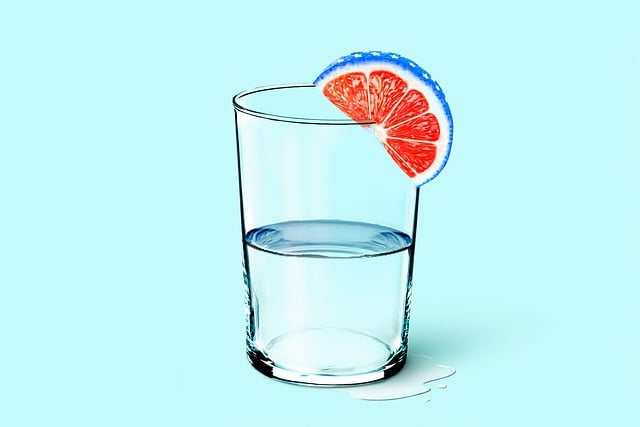Cold therapy, including ice packs, cryotherapy, and cold water immersion, offers effective and immediate migraine relief by inducing vasoconstriction. These non-pharmacological approaches reduce inflammation and pain signals, providing both local and overall relaxation benefits. Techniques like applying cold compresses to specific areas or immersing the body in cold water are accessible at-home solutions that can alleviate migraine symptoms and potentially prevent future episodes. Science behind these methods reveals their ability to constrict blood vessels, reduce inflammation, and inhibit nerve endings, offering significant recovery and preventive benefits for migraine sufferers.
Migraines can be debilitating, but relief is within reach through the power of cold therapy. This natural approach to headache management has gained significant attention due to its effectiveness in both treating acute migraine episodes and preventing future attacks. From simple ice packs to advanced techniques like cryotherapy and cold water immersion, this article explores various cooling techniques proven to reduce migraine pain and offer lasting benefits for headache prevention.
Understanding Cold Therapy and Its Potential for Migraine Management
Cold therapy, an approach that involves exposing the body to cold temperatures, has gained recognition as a promising method for managing migraines and preventing recurring headaches. This technique leverages the power of cryotherapy, where extreme cold is used to induce vasoconstriction, or the narrowing of blood vessels. By reducing blood flow to affected areas, cold therapy helps alleviate migraine pain and inflammation. One simple yet effective method involves applying an ice pack or a cold compress directly to the head and neck for immediate relief.
Additionally, techniques like cold water immersion, where one soaks in cold water, have shown benefits for migraine sufferers. This practice not only provides local cooling but also promotes overall relaxation, which can be crucial in preventing migraines. The use of cryotherapy for migraines is becoming increasingly popular as a non-pharmacological solution, offering a natural and safe way to manage this debilitating condition and potentially reduce the need for medications with side effects.
Ice Packs: A Simple Yet Effective Solution for Migraine Relief
Ice packs are a simple yet effective solution for migraine relief, offering an accessible and immediate form of cold therapy for migraines. The application of cold compresses on the forehead, temples, or back of the neck can significantly reduce inflammation and constrict blood vessels, providing quick migraine pain relief. This technique is particularly beneficial for acute migraine attacks, helping to lessen intensity and duration.
Beyond ice packs, other cooling techniques for headaches include cold water immersion and cryotherapy for migraines. Submerging oneself in cold water or using cryo-camps can induce vasoconstriction, reducing blood flow to the brain and easing migraine symptoms. These methods offer longer-lasting relief but require more preparation compared to the convenient and quick ice pack approach.
Exploring Advanced Techniques: Cryotherapy and Cold Water Immersion
In the pursuit of advanced migraine management, individuals are increasingly exploring innovative techniques such as cryotherapy and cold water immersion. Cryotherapy involves exposing the body to extreme cold for brief periods, often in a specialized chamber. This therapy has gained traction for its potential to reduce inflammation and constrict blood vessels, offering significant benefits for post-migraine recovery. By inducing a rapid cooling effect, it can alleviate migraine pain effectively and even prevent future episodes.
Cold water immersion is another powerful tool within the realm of cold therapy. Submerging oneself in cold water, either partially or fully, triggers a cascade of physiological responses beneficial for headache relief. The shock of cold water helps to distract the mind from pain signals, while simultaneously reducing muscle tension and promoting blood flow to affected areas. This simple yet effective cooling technique can be easily incorporated into at-home routines, providing a readily accessible solution for migraine management alongside ice packs.
The Science Behind Cold Compressions and Their Benefits for Headache Prevention
The science behind cold compressions reveals a powerful natural mechanism to combat migraines and alleviate headache symptoms. When a cold pack or ice bag is applied to the head, it triggers a cascade of physiological responses. Cold therapy constricts blood vessels in the brain and surrounding areas, reducing inflammation and inhibiting pain signals sent to the nervous system. This rapid cooling effect can also help to stabilize irregular electrical activity in the brain that contributes to migraine attacks.
Regular use of cold therapy techniques like ice packs for migraine relief, cryotherapy sessions, or even a cold water immersion can offer significant benefits for both recovery and prevention. Over time, these cooling treatments may help desensitize nerve endings, making future migraines less intense and shorter-lived. By employing simple yet effective cooling techniques, individuals can take control of their migraine management and experience lasting relief and improved quality of life.
Cold therapy emerges as a powerful and accessible tool in the arsenal against post-migraine recovery and prevention. From simple ice packs to advanced techniques like cryotherapy and cold water immersion, these cooling techniques offer significant benefits for migraine pain relief and long-term headache prevention. By understanding the science behind cold compresses, individuals can navigate an effective and natural approach to managing their migraines, potentially reducing reliance on medication and enhancing overall well-being.
